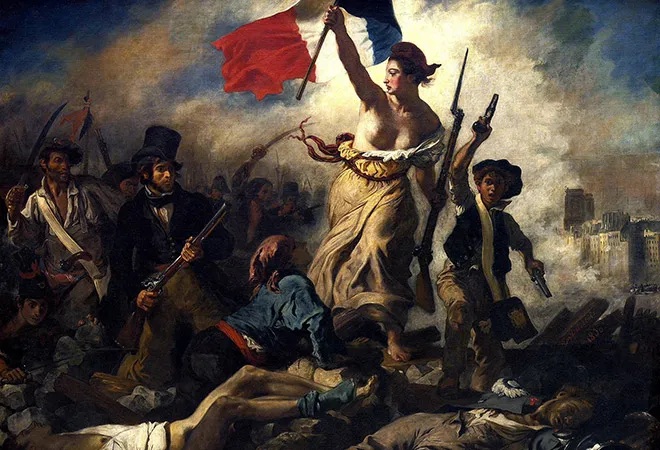
AI has a lot to offer to the world. But more so is its capability of providing adequate data in service of a more consorted international humanitarian response.
By Marita Kassis
Artificial intelligence might have been presented as a threat to human labour; however, today, it is also a factor in streamlining the humanitarian response to help those most affected.
AI has always been a concern for people fearing that computerised systems will soon replace human tasks. However, these concerns are taking a whole new dimension with more experimentation with AI to be able not only to replace technical labour but also to mimic human behaviour with speech, decision-making, and writing.
ChatGPT, an AI-powered chatbot, is the latest frenzy in the AI world; it has made the headlines for being able to have conversations, make medical diagnoses and even write content. The software taps into every possible knowledge to amass information and data and provide the researcher with good content. Its learning capability is unlimited, which is why some view it as a threat.
Like anything new, issues and mistakes are bound to surface; opinionated and biased answers might begin a series of potential drawbacks, including erroneous information, since it gathers data from the internet and cannot distinguish right from wrong answers yet.
AI is reshaping the world and will replace some jobs that run on an autopilot wheel. Still, it will only partially replace everything and everyone, mainly when a human element is necessary, when common sense, emotional intelligence, and humane emotions are required.
Interviewed by CNBC, Dimitris Papanikloaou, a professor of finance at the Kellogg School of Management at Northwestern University, said, “Jobs that emphasise interpersonal skills are much harder to be replaced by an AI.”
The fear of filling some jobs and replacing human beings aside, AI is just at the beginning of a revolutionary engagement with the world. The initial thought was to automate, but now it’s leaning more toward complementing.
CEOs and entrepreneurs don’t view AI as a competition but as a tool to optimise specific fields. There are countless ways in which AI might be utilised in the future, but right now, it can enhance results and improve employees’ performance.
The military seems to be leading such efforts among the many sectors employing AI. Knowing how critical and dangerous weaponising AI can be, the United States launched an initiative highlighting best practices in using AI by the militaries, intending to regulate it somehow. According to a report by Reuters, the industry rests on “promoting international cooperation on the responsible use of artificial intelligence and autonomous weapons by militaries, seeking to impose order on an emerging technology that has the potential to change the way war is waged.”
With the ongoing worldwide catastrophes, and the urgency to adequately and efficiently respond to natural disasters and the effects of wars, AI can become a powerful tool in assisting the humanitarian process.
We are increasingly witnessing the chaos of immediate responses, missing data, unorganised information, decentralised data, duplication of efforts, and inadequate donations. There is an increasing gap between the selfless help and donations the world provides and the actual needs that are verbalised on the ground.
Microsoft has spearheaded a program using “AI for Humanitarian Action” by donating $40 million to NGOs and humanitarian organisations over five years. This form of intelligence would support “disaster response, refugees, displaced people, human rights, and the needs of women and children.”
AI can have a significantly positive impact on how we handle humanitarian disasters. The 3rd Riyadh International Humanitarian Forum hosted by the King Salman Humanitarian Aid And Relief Centre focused on its talks and recommendations on the benefits of using AI in the humanitarian field.
AI keeps growing and expanding, and so will its capabilities and usage. Based on the current layout, AI can help expedite different processes during critical situations in disaster response, healthcare, refugee crisis food production and farming. AI can quickly provide imagery assessment, whether satellite or graphic, and help predict, prevent, and respond where and when necessary.
There are several ways in which AI can be further used to optimise situations, match on-the-ground needs with donors and NGOs, seek food security, predict natural disasters based on imagery, etc.
And yet there are still endless untapped possibilities on how AI can be further used to benefit various other fields.
AI can transform the humanitarian landscape by enabling more efficient and effective responses to crises. Humanitarian response is only efficient when it can successfully and scientifically reach the most vulnerable populations.
Nevertheless, as history has repeatedly taught us, ethical considerations should be ensured in developing and deploying AI systems, from transparency to fairness and unbiased approaches.
Maria-Rita Kassis is a Political Analyst, and Media - Communication Specialist. She is based in Beirut. This is her fist contribution for the Liberum.







Great article,
but I don’t believe AI
can outwit
The Cash Mob Elite
and it’s
USURY Leverage Device:
The PAPER US Dollar.
Declare
demurrage (holding charges)
on The US Dollar;
AI has no idea about where
PAPER US Dollars are at
or what they’re doing.
Plan B:
Trump Money with
demurrage (holding charges)
💜 Angel NicGillicuddy